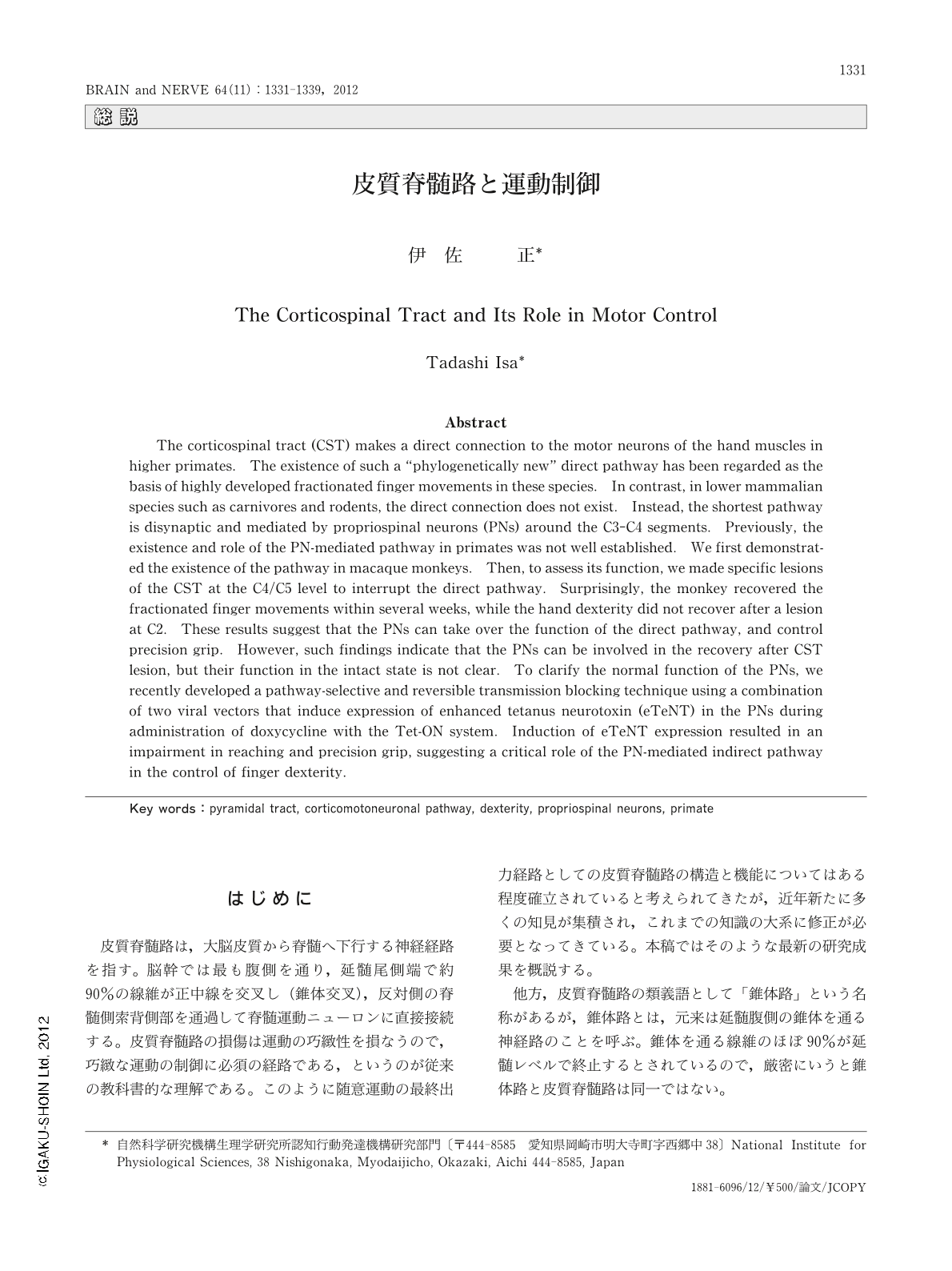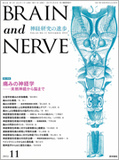Japanese
English
- 有料閲覧
- Abstract 文献概要
- 1ページ目 Look Inside
- 参考文献 Reference
はじめに
皮質脊髄路は,大脳皮質から脊髄へ下行する神経経路を指す。脳幹では最も腹側を通り,延髄尾側端で約90%の線維が正中線を交叉し(錐体交叉),反対側の脊髄側索背側部を通過して脊髄運動ニューロンに直接接続する。皮質脊髄路の損傷は運動の巧緻性を損なうので,巧緻な運動の制御に必須の経路である,というのが従来の教科書的な理解である。このように随意運動の最終出力経路としての皮質脊髄路の構造と機能についてはある程度確立されていると考えられてきたが,近年新たに多くの知見が集積され,これまでの知識の大系に修正が必要となってきている。本稿ではそのような最新の研究成果を概説する。
他方,皮質脊髄路の類義語として「錐体路」という名称があるが,錐体路とは,元来は延髄腹側の錐体を通る神経路のことを呼ぶ。錐体を通る線維のほぼ90%が延髄レベルで終止するとされているので,厳密にいうと錐体路と皮質脊髄路は同一ではない。
以下本稿では,特に脊髄投射系を論じる場合には皮質脊髄路と書き,「錐体路」と記す場合は,皮質由来で脊髄まで下行せずに脳幹レベルで終止する線維群も含むこととする。
Abstract
The corticospinal tract (CST) makes a direct connection to the motor neurons of the hand muscles in higher primates. The existence of such a "phylogenetically new" direct pathway has been regarded as the basis of highly developed fractionated finger movements in these species. In contrast, in lower mammalian species such as carnivores and rodents, the direct connection does not exist. Instead, the shortest pathway is disynaptic and mediated by propriospinal neurons (PNs) around the C3-C4 segments. Previously, the existence and role of the PN-mediated pathway in primates was not well established. We first demonstrated the existence of the pathway in macaque monkeys. Then, to assess its function, we made specific lesions of the CST at the C4/C5 level to interrupt the direct pathway. Surprisingly, the monkey recovered the fractionated finger movements within several weeks, while the hand dexterity did not recover after a lesion at C2. These results suggest that the PNs can take over the function of the direct pathway, and control precision grip. However, such findings indicate that the PNs can be involved in the recovery after CST lesion, but their function in the intact state is not clear. To clarify the normal function of the PNs, we recently developed a pathway-selective and reversible transmission blocking technique using a combination of two viral vectors that induce expression of enhanced tetanus neurotoxin (eTeNT) in the PNs during administration of doxycycline with the Tet-ON system. Induction of eTeNT expression resulted in an impairment in reaching and precision grip, suggesting a critical role of the PN-mediated indirect pathway in the control of finger dexterity.

Copyright © 2012, Igaku-Shoin Ltd. All rights reserved.


